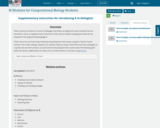When we come across a graph, a chart, or an infographic, how …
When we come across a graph, a chart, or an infographic, how do we know if it is telling the truth? Often, numbers and data convey an authority that is hard to dispute, especially when they are arranged visually in a compelling way. Yet, data, in the ways it is gathered and shared, can be misrepresented and portray a slanted reality rather than a more accurate depiction.
This workshop introduces the concept of data literacy, or the ability to comprehend and interpret data, as a method of cultivating a critical mindset towards representations of information. Participants will learn how to discern misleading data visualizations and collaborate with others in developing strategies for analyzing data that is more accurate and useful. All consumers of information, especially undergraduate students, are encouraged to attend.
By the end of this workshop, participants will be able to:
* Understand what data is and how it is used for rhetorical, commercial, and political purposes
* Identify errors and discrepancies in how data is produced and represented
* Engage with data visualizations in multiple contexts with a healthy degree of skepticism
* Communicate their interpretations of data with their peers







